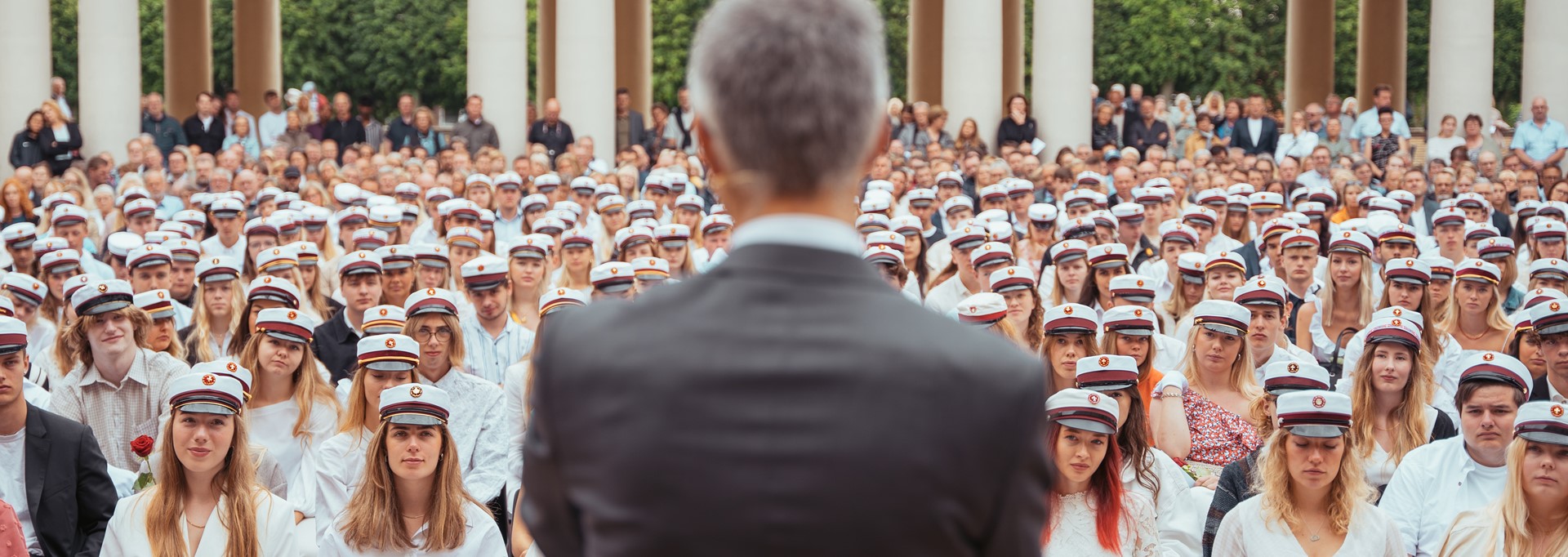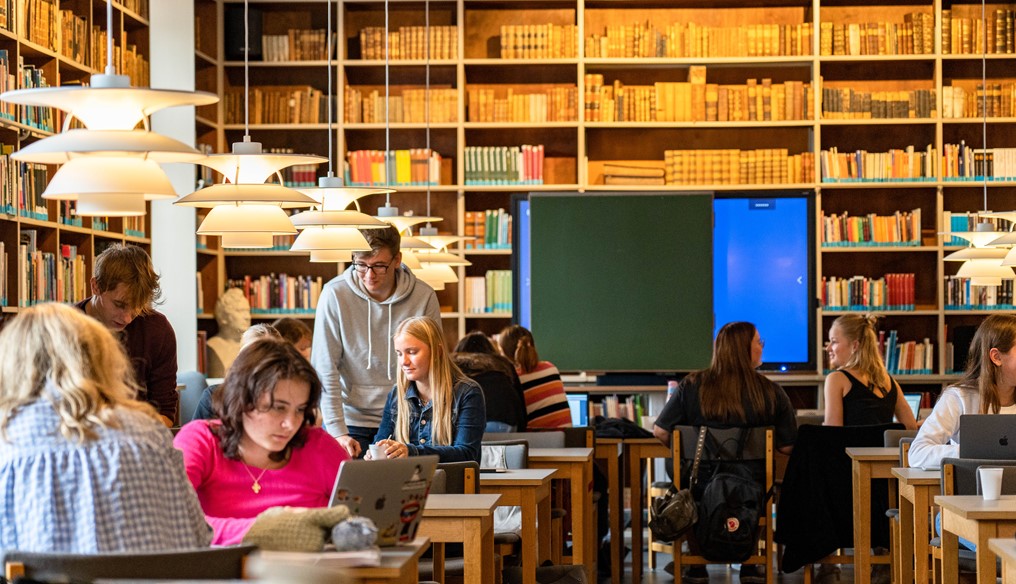
Living history
At Viborg Katedralskole, we are living the history - right now. This entails an education in a classical setting with a contemporary view.
The long history of the school
Viborg Katedralskole is the oldest upper secondary school in Denmark. Over time, students such as author Johannes V. Jensen, politician Anders Fogh Rasmussen and journalist Lise Rønne have put on their student's cap after graduating from our school.
The long history of the school and the people who have set foot here during the ages have helped shaping the school into what it is today. This also means that as a student at Viborg Katedralskole you will be part of the unique VK community.
Traditions and history are central to Viborg Katedralskole. But they get dusted off when time so demands. For example, our oldest student committee, Minerva, which is actually older than all Danish political parties, has developed from an association arranging lectures on poetry and literature to an association that strengthen the student community of the school in the form of the annual parties.
Since 1926, Viborg Katedralskole has been housed in the Hack Kampmann’s building on Gl. Skivevej 2. Today, students have their daily classes in theis historic setting, which is characterised by the neo-classical architecture and the art that has been bestowed upon the school through time.
The school is continuously and carefully updated, and the classrooms, laboratories and other facilities are those of a modern school, dedicated to the needs of students and teachers.
Pieces of our history
1060 - How Viborg Katedralskole began
Christianity came from the south, and with it the need for teaching. The Schleswig and Ribe dioceses were established as the first. Aarhus and Viborg dioceses were separated from Ribe in approx. 1060, and ever since there has been a cathedral in Viborg. Schooling has probably been going on for just as long. The oldest documented date, 1132, we find in the life of St. Kjeld. Maybe one day more documents about the school in Viborg will be found in the Vatican's vast archives.
The school was part of the cathedral's extensive activities, and the bishop was the supreme leader. The daily operation of the school was provided by a principal and some sub-teachers. Teaching took place in various of the buildings that the bishops had at their disposal.
1860 - The founding of Minerva
The student association Minerva was founded on 15 September 1860 by Jesper Elle and seven of his peers from the oldest class. Jesper Elle became the first chairman, and the number of members grew steadily in the following period. The purpose of the association was "by reciting poets to put the members in closer acquaintance with the literature and by oral disputation to practice expressing themselves in brief".
The reading of poems became the dominant aspect, and night after night they gathered and read the great poets of the time to each other: H.C. Andersen, Oehlenschäger, Baggesen, Holberg, Winther, Bjornson etc.
1940 - VK during World War 2
Some students reached important positions in the resistance movement. Viborg Stifts Illegale Tidende, which was one of the city's prominent illegal magazines, was edited in 1944 by baker's assistant Søren Vestergaard. In connection with the raid in Viborg on 23 October 1944, where the Gestapo arrested 14 citizens of Viborg and thereby intervened deeply in the core of the resistance movement, Søren Vestergaard had to go underground and leave the city. The illegal magazine was then taken over by two of the school's students, who continued the publication until the liberation, no doubt with great personal risk.
If you have a wish to visit the school, you can contact Kirstine Østrup on 6068 2117 or kir@vibkat.dk.

Do you have any further questions?
Please feel free to contact the IB coordinator on this number +45 86620655 or write an email to ib@vibkat.dk.

